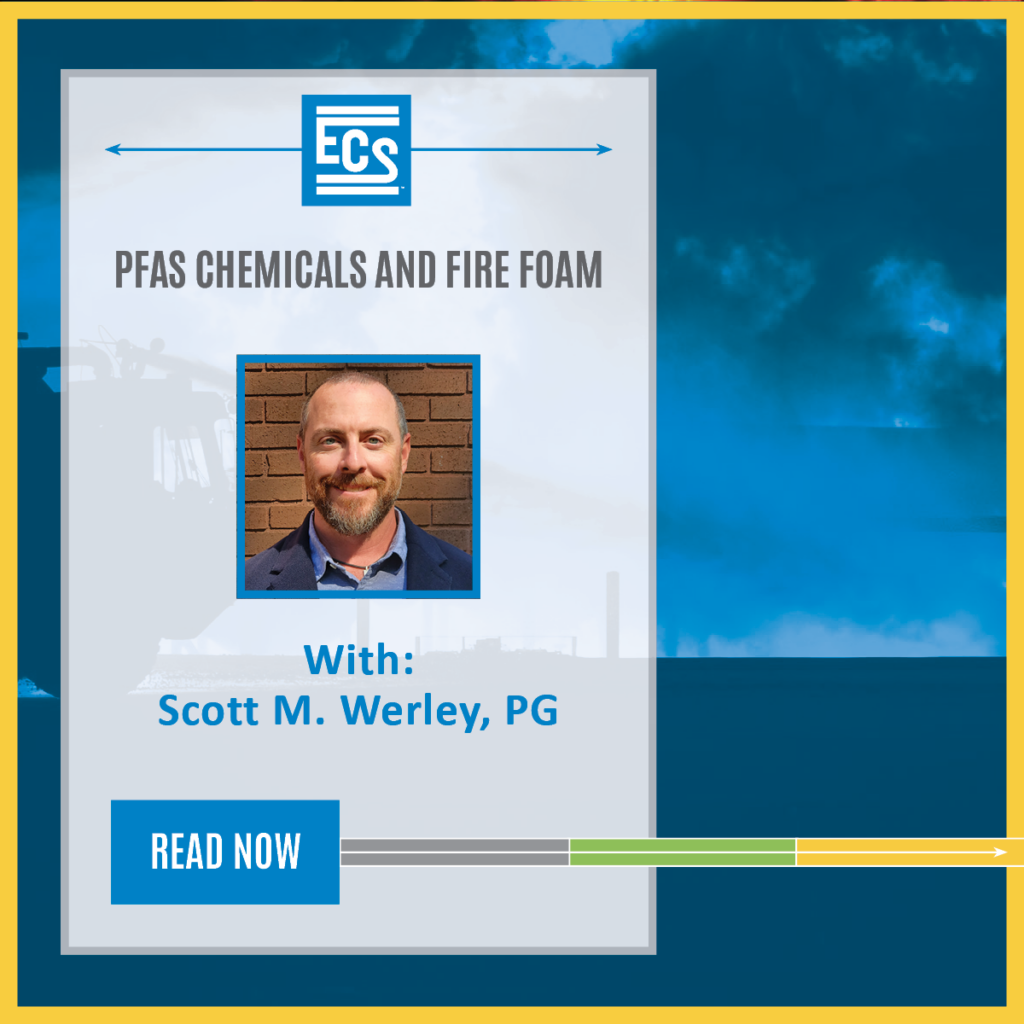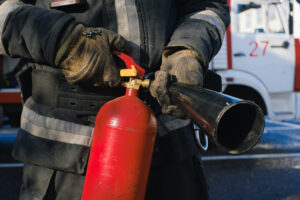
|
PFAS, while not a new topic of concern, have seen an increase in public consciousness in recent years thanks to social media and a variety of lawsuits. What is PFAS? PFAS is an acronym for per- and polyfluoroalkyl substances. These widely used human-made chemicals are commonly referred to as “forever chemicals” because they primarily consist of compounds that persist and do not break down in our environment. PFAS can be found in drinking water, food, soil and air because of their use in wide variety of products people use regularly, including non-stick cookware, stain-resistant fabrics, cosmetics and waterproof apparel to name a few. While excellent at their job to resist heat, corrosion, oil, stains, grease and water, exposure to PFAS has resulted in negative effects on people’s health, including increased risk of some cancers, decreased fertility, developmental effects or delays in children and more. The extent of these health effects is difficult to determine and is still being studied. PFAS aren’t limited to daily-use products. They are a major concern in fire suppression efforts for their inclusion in firefighting foams and have a serious effect on human health and the environment through this application. |
ECS Limited PFAS Assessment and Monitoring Services
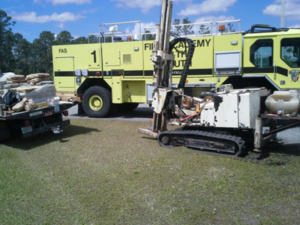
PFAS chemicals and firefighting foams
One of the PFAS compounds—C8, or perfluorooctanoic acid (PFOA)—is found in aqueous film-forming foam, also referred to as aqueous firefighting foam (AFFF), a class B firefighting foam used for the suppression of liquid fuel fires. It’s most commonly used at airports and military installations, but the U.S. Forest Service and some local fire departments also use AFFF.
According to the U.S. Government Accountability Office, the Department of Defense (DOD) conducted environmental investigations in 2021 at nearly 700 military installations that have had a known or suspected release of PFAS. Even without an effective replacement, the DOD will stop purchasing PFAS-containing firefighting foam in late 2023 and phase it out entirely in 2024. However, once the DOD determines a replacement, that determination is likely to influence the purchasing decisions of other firefighting services, hopefully leading to the phasing-out of PFAS-based firefighting foams altogether.
Health concerns
Considering what we know about the health effects PFAS pose, firefighters are particularly at risk of exposure because they use AFFF during both training and actual fires, in addition to the presence of PFAS in the personal protective equipment worn to do their jobs.
Since there are so many compounds, the National Institute of Environmental Health (NIEH) is targeting specific groups of compounds first. Scientists and researchers have been looking into these groups to compare and contrast the health effects each have on human health. Additionally, extensive research is underway on the cause and effect of PFAS uptake on crops.
Environmental concerns
There are high concentrations of PFOA in the foam that gets sprayed on fires. These foams help create a “blanket” to suppress, or smother, the flames to extinguish them. After fires are suppressed, AFFF residual remains can seep into the ground.
Once PFAS chemicals are introduced into soil, future precipitation events can mobilize them, potentially leading to exposure to waterways that many people rely on for their water source.
Because PFAS are ubiquitous, more collection, testing and research must be done. Their persistence in the environment and the sheer diversity of PFAS compounds makes it difficult to understand potential specific sources.
AFFF fall-out prevention
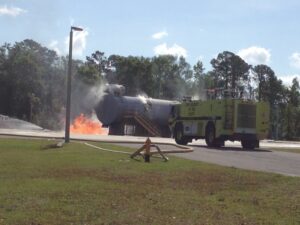
Due to their properties, it takes a lot to destroy PFAS chemicals. The compounds are extremely resistant to heat, which is why they’re helpful in AFFF for fire suppression.
In the absence of a proven method for destroying PFAS chemicals, three major steps that can be taken to minimize their environmental impact when responding to fires and conducting fire prevention activities include:
- Minimize or cease the use of the AFFF firefighting foam, or only use it when it is absolutely necessary to extinguish fires with an accelerant source because the fires alone already cause an extensive risk and threat to human health and the environment.
- Potentially reduce the amount of training with real fires using firefighting foam and substitute these with simulations. Trainings could be similar but reinvented so that exposure is limited. This would potentially also help reduce environmental impact.
- Conduct cleanup efforts after fires are extinguished per any existing state or national guidelines regarding the use of PFOA or AFFF.
When it comes to PFAS-laden turnout gear—the personal protective equipment used by firefighters, including coat, pants, fire hood, helmet and gloves—there are no new developments for disposing of that equipment. Turnout gear is typically sent to municipal landfills with leachate collection systems—the same places household waste goes. Those collection systems are designed to capture the chemicals that leach from waste, preventing it from entering soils and waterways.
How to protect emergency responders
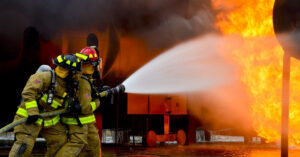
Firefighters must be cognizant of their exposure to these forever chemicals. One easy thing to do is minimize dermal exposure by wearing more base layers to prevent direct contact with the foam during use.
It’s imperative that scientists and researchers communicate new findings as they develop. According to Clean Water Action, there is limited action at a federal level, but states are working to restrict use of AFFF for non-federally mandated firefighting entities, banning its use in all training exercises and even requiring disclosure of PFAS in firefighting gear.
Knowing what your state, or other states around the country, are doing is important. Be informed and ask questions about limiting your exposure to PFAS.
If you’re located near a military installation or have concerns about PFAS contamination, contact us to discuss ECS’ PFAS assessment and monitoring services.
ABOUT THE AUTHOR
Scott M. Werley, PG, is an Environmental Principal from our Raleigh, NC, office. Scott is a Principal Geologist for ECS with 20 years’ experience in the environmental field. Scott’s experience includes federal, state and local regulatory arena negotiation, environmental liability assessment, federal, state and local regulatory knowledge and environmental due diligence assessment. He is also a licensed professional geologist in four states and leads ECS’ internal PFAS team and has extensive knowledge of how the USEPA is working to regulate their presence and future use.

